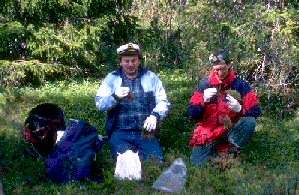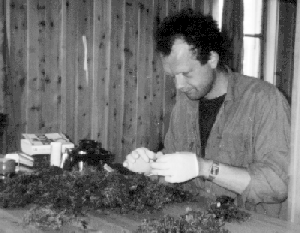
Fig.1: Scanned specimen of Hylocomium splendens, reproduced here at about twice its real size.

(Photo: C. Reimann)
Fig.2: Collecting moss in the field with plastic gloves.

(Photo: T. Volden)
Fig. 3: Evening entertainment at the base camp...
Rationale
Mosses generally have poorly developed or non-existent root systems,
and therefore gather most of their nutrients directly from the
atmosphere, via either wet or dry deposition. As a result, they
can act as bioindicators of air pollution. Mosses selected
for this study are Hylocomium splendens (Fig. 1) and Pleurozium
schreberi. The former species has distinct yearly growth shoots,
enabling dating of the material analysed (usually the last three
years).
Advantages
Mosses are nearly ubiquitous, and are suitable air-quality indicators.
Drawbacks
Very vulnerable to airborne pollution (not available at the most
polluted sites).
Affinity for different elements may vary.
Low concentration levels in background areas impose non-contaminating
sampling and handling (Figs. 2-3), as well as very low detection
limits on analytical instruments.